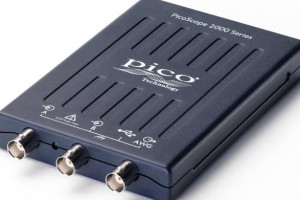Agilent Technologies is demonstrating a cloud-based radio access network as part of the C-RAN collaboration project with China Mobile Communications Research Institute (CMRI) at the 2014 Mobile World Congress in Barcelona. Agilent and CMRI have been developing technology and test methods for a next-generation, cloud-based radio access network, or C-RAN. Areas of research include TD-LTE/TD-LTE-Advanced Radio Frequency testing, new test ...
Testing
Knowing M-PHY helps low power IC design
MIPI M-PHY specification is an important element in mobile device design and Dean Miles presents some tips about testing physical interfaces. Three billion MIPI-powered ICs were shipped in 2012, but of those only 100 million were based on the high-performance, low-power M-PHY specification. Take the Electronics Weekly UK Salary Survey 2014 » That is certain to change in the coming ...
Microwave tests benefit from correlation for accuracy in the hand
Tom Hoppin from Agilent Technologies explains how to correlate microwave measurements between handheld and benchtop analysers to achieve higher accuracy in the field As more and more technicians and engineers head into the field to make measurements in less than hospitable conditions, the need for accurate handheld measurement instrumentation has become all the more acute. For many, however, “precise microwave ...
What should you think about when specifying a USB oscilloscope?
USB-based oscilloscopes are becoming increasingly popular. Performance enhancements and new levels of functionality mean these instruments are becoming more attractive to test engineers. They can be used in a range of applications from OEM production lines right through to academic research. In the following article, the basic structure of a USB scope will be detailed, along with its various operational ...
Cambridge researchers get atomic force microscope to study graphene
Cambridge Graphene Centre (CGC) has seen the installation of an atomic force microscope (AFM) supplied by Agilent Technologies. Graphene is the second layer of carbon atoms that are sp2 covalently bonded into a honeycomb lattice. Much of graphene’s appeal comes from its unique electronic properties that may one day make super-high-speed devices a reality. Agilent’s 5600LS AFM has scanning microwave microscopy capabilities for electrical ...
Power meters are sexy now
Power measurement was once thought the worthy but dull end of the test market. Not any more can power measurement be called “dullsville”. Product announcements in this week’s magazine by Tektronix and Yokogawa threaten to glam-up the trusty power meter on your test bench. Take the Electronics Weekly Salary Survey 2014 » Power design has always been an important part ...
Agilent speeds DDR debugging
Agilent Technologies has introduced a debugging tool to help with DDR memory pre-compliance testing. “The tool allows designers to navigate to areas of interest for further analysis and collect and analyse statistical data,” said the firm. “The DDR3 and LPDDR3 debug tool runs on Infiniium 9000A, 90000A, 90000 X- and 90000 Q-Series oscilloscopes.” Aimed at engineers who work in the ...
PCB temperature measurement to +/-0.1°C
EthermView is a liquid crystal thermographic analysis system that provides accurate optical temperature measurements of active PCBs and components using the colour response of thermochromic liquid crystals. Developed by Advanced Thermal Solutions (ATS) of Massachusetts, the system includes a colour camera (Firewire interface) with illumination for macroscopic inspection of boards and components. “In contrast to infrared thermography systems, the ethermView ...
Free boundary scan test workshop in Cambridge
XJTAG is hosting a free boundary scan workshop on Tuesday 21st January 2014 at the St. John’s Innovation Centre in Cambridge. Targeted at design, test and production engineers, the sessions will provide an introduction to JTAG boundary scan and the IEEE 1149.x standard. “In an age where chip and board geometries continue to shrink, working at higher speeds and greater ...
Pico PC oscilloscopes get much smaller
Pico Technology has cut the size of its 2000 series of 200MHz PC oscilloscopes by almost 80%, to around the size of a passport, in a project that started as a challenge between engineers. “They are as thin as can they can possibly be made and still have BNC connectors,” Pico MD Alan Tong told Electronics Weekly. Pico’s scopes connect ...
 Electronics Weekly Electronics Design & Components Tech News
Electronics Weekly Electronics Design & Components Tech News







